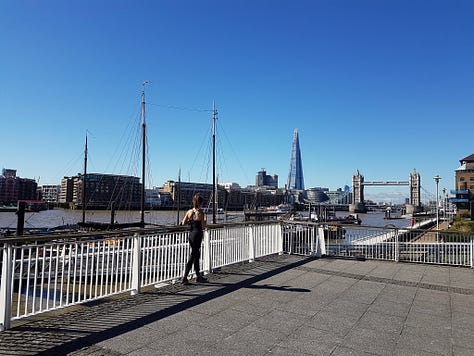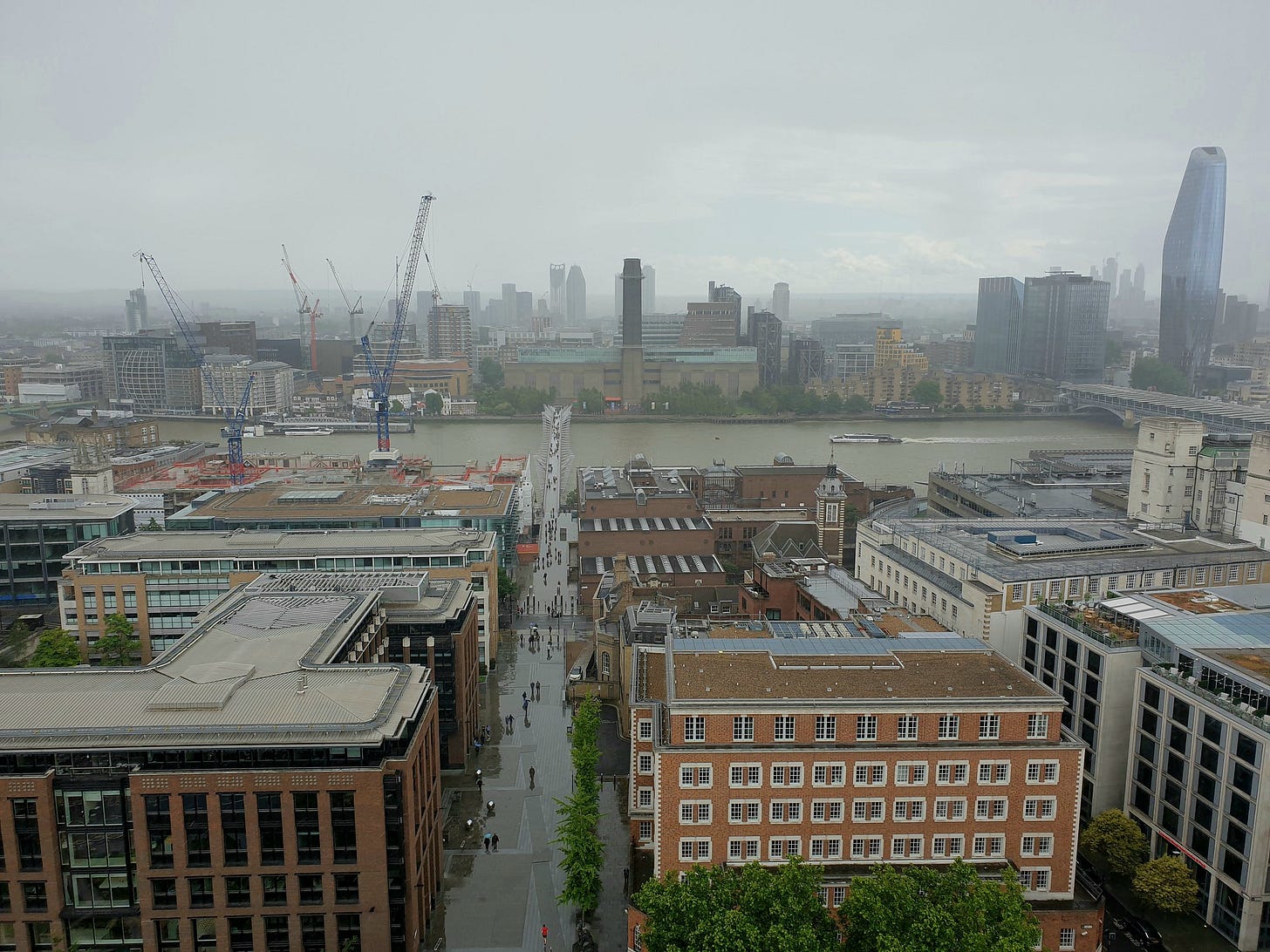London
I’ve been watching an early-2000s TV programme, set in London. It’s a fascinating glimpse into a lost world: the London in the series is obviously the London of the 1990s that I remember, and is pretty much the same as the London of old Children’s Film Foundation stuff I watched as a child, or in fact anything back to about Blow Up, which neatly captures the moment post-Blitz London ends and a new city begins to grow.
But London 2003-2005 is nothing like London now. The skyline’s changed radically, of course - but so has everything at street level. Phone boxes and Routemaster buses are gone, rental bikes and online shopping pick-up points are in. London has, of course, always changed - that’s what makes it interesting. As George Orwell said of England, it is ‘stretching into the future and the past, and, like all living things, [has] the power to change out of recognition and yet remain the same.’
But I can’t help but think some of the local distinctiveness, some of the fine grain that makes London special, is being lost. The regeneration of King’s Cross is magnificent, on one level (my old office in London was in the middle of late-1990s King’s Cross, and it needed help), but it’s also created a set of spaces that could be anywhere, and softened the traditional differences between London neighbourhoods. There’s no space left for bohemias. Are there any corners left, that really couldn’t be anywhere else - where do you suggest I explore?



Work Stuff
I’ve got two projects I’m planning and want to roll out, so if you’d like to book either of them I’d love to hear from you. Tried, tested, and retested, Agora brings people from very different backgrounds together to share stories, celebrate the place they live, and find they have more in common than divides them. And Dan Thompson’s Seaside History Club is an evening of talks, activities, and fun around seaside towns.
If you want to know more about what I do and why, have a look at Dan Thompson Stuff - the book about my work, which includes contributions from Bernadette Russell, Professor Martin Parker, and others. If you’d like to support my work, there’s a new, monthly paid newsletter and there will be some extras for subscribers coming soon. Or - just pass this newsletter to a friend, and suggest they subscribe. Right now, I’d really appreciate your support.
And don’t forget, the offer to use my Margate studio during autumn-winter is still there.
Anyway, enough about me - you’re here for the ten happy, hopeful, optimistic things. And beavers. Let’s go.
For more than 40 years, local community members and elected leaders along California’s Central Coast have advocated for the establishment of a national marine sanctuary. In 2013, the Northern Chumash Tribal Council launched a campaign to make it happen. And it's just been officially designated - the first Tribal-nominated national marine sanctuary in the US.
White poppies for peace. You can order them from Peace Pledge Union here. If you're in Margate, I always have some at my studio.
The great designer Saul Bass designed the Kleenex logo in 1961. Then it lost some of its magic in subsequent rebrands. Here's how the magic was brought back.
The Low Carbon Hub is a social enterprise that’s out to meet energy needs in a way that’s good for people and good for the planet.
They have developed community-owned renewable energy installations across Oxfordshire that not only produce clean energy but accelerates the transition to the zero carbon energy system we need for the future, providing electricity, heat and a clean transport system, all powered by renewables. And they use profits for good things such as better insulating schools and other buildings.
A book of the Poetry of Byron borrowed by schoolboy Leonard Ewbank, who studied at Oxford and was killed at Ypres in 1916, has been returned to the school library 113 years overdue.
Trees! Claim a community tree pack from The Conservation Volunteers today and get planting in your neighbourhood. Tackle climate change with carbon-busting trees, plant a pocket forest - create havens for wildlife, and green up your local environment.
NatureScot has produced a report for Scottish Ministers, to help them decide whether or not the beaver should be reintroduced to Scotland. "Reintroducing a species absent for many centuries is a very significant decision for any government," they say. The report, Beavers in Scotland - A report to Scottish Government, is one of the most thorough assessments ever done for a species reintroduction proposal.
I'd also suggest ministers subscribe to The Ragged Optimist to understand how much happiness beavers bring.
Art For Anyone has been designed to help local arts organisations, community groups, and venues ensure they consider the access needs of different people when planning events.
Two wild bison calves have been born in Blean Woods, near Canterbury, after a herd of the animals was introduced by Kent Wildlife Trust in 2022. Bison strip bark from trees, creating standing deadwood which attracts invertebrates and birds, and their dustbathing sites create habitats for amphibians and attract burrowing insects. Through their sheer size, bison create corridors through dense woodland, opening up the forest canopy and bringing light to the forest floor encouraging woodland regeneration. They’re good all round.
And if those nine good things (plus this one equals ten) aren't enough - ten good things from Greenpeace, with a list of climate wins.




